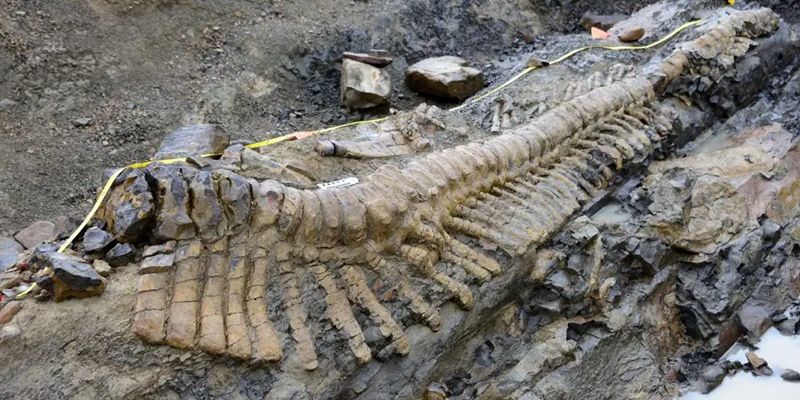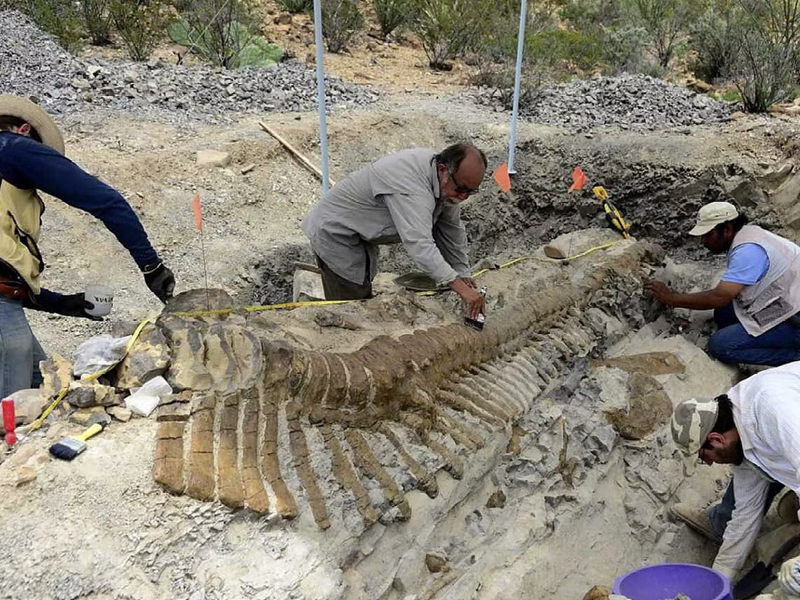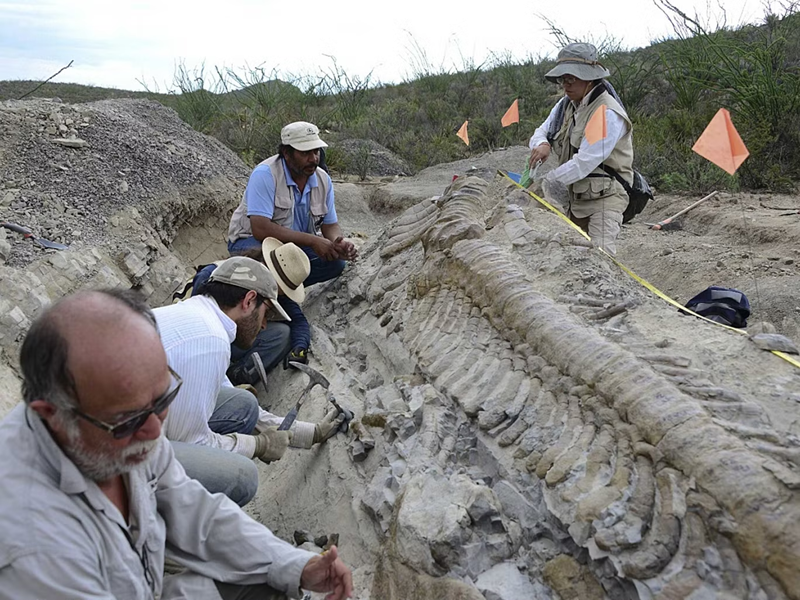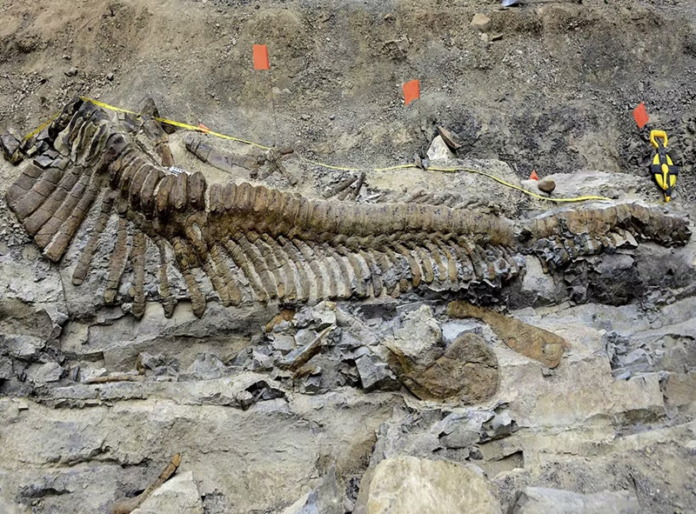On a peaceful morning in Mexico, a group of archaeologists were diligently working under the bright sun. Little did they know that this day would become a memorable one in the country’s archaeological history. In the desert near the small town of General Cepeda in Coahuila, a team of researchers from the National Institute of Anthropology and History (INAH) and the National Autonomous University of Mexico (UNAM) discovered a part of a fossil of a dinosaur dating back 72 million years.

This was no ordinary discovery, as the fossil they found was the five-meter-long tail of a dinosaur from the hadrosaur family, also known as the duck-billed dinosaur. Francisco Aguilar, director of INAH, couldn’t hide his amazement when he revealed that this was the first dinosaur tail ever found in Mexico and that it was exceptionally well-preserved.

According to Aguilar, this tail might have made up half of the dinosaur’s length. After 20 days of arduous work, carefully lifting the sedimentary rocks covering the creature’s bones, the archaeologists discovered the entire 50 vertebrae of the tail intact. Around this area, they also found other fossilized bones, including part of the dinosaur’s hip.

Francisco Aguilar also mentioned that discoveries of dinosaur tails are quite rare. He hoped that this new finding would provide further insights into the hadrosaur family and assist in research on diseases that affected dinosaur bones, which are similar to those found in humans, such as tumors and arthritis.

Coahuila, along with other northern desert states of Mexico, has long been fertile ground for fossil excavations. Aguilar explained that during the Cretaceous period, which ended about 65 million years ago, much of what is now central and northern Mexico was coastal, making it easier for researchers to find fossils of both marine and land dinosaurs.

After completing the excavation, the scientists decided to transfer the dinosaur tail to General Cepeda for cleaning and further investigation. And so, a new chapter in Mexico’s archaeological history was opened, promising exciting discoveries and new knowledge about the time when dinosaurs ruled the Earth.




